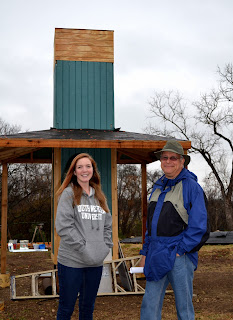Published in the Sun March 27, 2013
“You know, in West Texas the
EPA is trying to use a lizard to shut down oil and gas production. You know my view of lizards? They make dern fine boots.”
So stated Senator Ted Cruz in
his keynote speech at the Conservative Political Action Conference (CPAC) in
Washington DC on March 16. That
statement set me wondering what kind of lizard made such fine boots. A quick Google search revealed that the
senator was referring to the Dunes Sagebrush Lizard, also known as Sceloporus
arenicolus. Mr. Cruz must have little
bitty feet, because this lizard is just three inches long.
The Dunes Sagebrush Lizard
lives only in New Mexico and a few counties in West Texas. Unfortunately, his habitat requires a certain
miniature oak tree and a certain type of sand, both of which sit right on top
of the Permian Basin Oil Field, a location which could explain why Mr. Cruz is
so eager to have the tiny lizard decorate his footwear.
Actually the lizard is not
currently on the Endangered Species list because of voluntary conservation
agreements with many of the landowners in the area, but the real question
persists: Why should we care about tiny
lizards in West Texas, or salamanders in Williamson County, or migrating
songbirds, or Houston toads, or any other obscure species that very few people
have ever seen? Would it matter if they
all disappeared forever? Do we miss the
passenger pigeon or the dodo bird?
The problem, as I see it, is
that every species exists in a delicate balance with all the other creatures in
its ecosystem. When that balance is
upset, consequences always result. If
you take away the mountain lions, the deer will multiply until they have
nothing to eat except the flowers in your yard.
If you scare away the hawks, legions of grackles swarm the trees and
poop on your head. When the fire ants
invade, children can no longer catch horned toads and put them in shoeboxes.
There probably aren’t many
people of either political persuasion who are overly attached to the Dunes
Sagebrush Lizard in particular, but the world is losing thousands of species to
extinction every year, many of which we have never even studied. We don’t know what miracles of biology might
be lost. We could lose half of all wild plants,
animals, and birds on the planet by 2100.
The United Nations estimates that the population of wild vertebrate
species (those with backbones like birds, mammals, and reptiles) fell by 31%
between 1970 and 2006. Bird populations
in North American grasslands decreased 40% from 1968 to 2003. Wild fisheries are declining.
If we keep going this
direction we could end up with billions of people growing acres and acres of
genetically modified crops to feed ourselves and our factory farms crowded with
cows eating chicken waste. Oh wait, we
already have that. I meant we could end
up with nine billion people and no other living creatures except the ones we
raise to eat and the species that live off our detritus, like rats and
cockroaches. Fire ants would probably
survive too.
It’s not just oil versus
lizards; jobs versus environmentalists. Not
every choice is about profit. We make
uneconomical decisions all the time.
When you buy shoes, you don’t always get the cheapest pair off the
bargain rack. Usually you pay more for
comfort or style. When you buy piano
lessons for your child, do you really expect to get your money back when your
prodigy plays at Carnegie Hall? Of
course not. You are investing in a
quality future, in values beyond dollars and cents.
The same principle holds for
the Dunes Sagebrush Lizard. The price of
Permian Basin oil goes up and down, but what is the worth of a world we can
share with wild creatures? Priceless.





